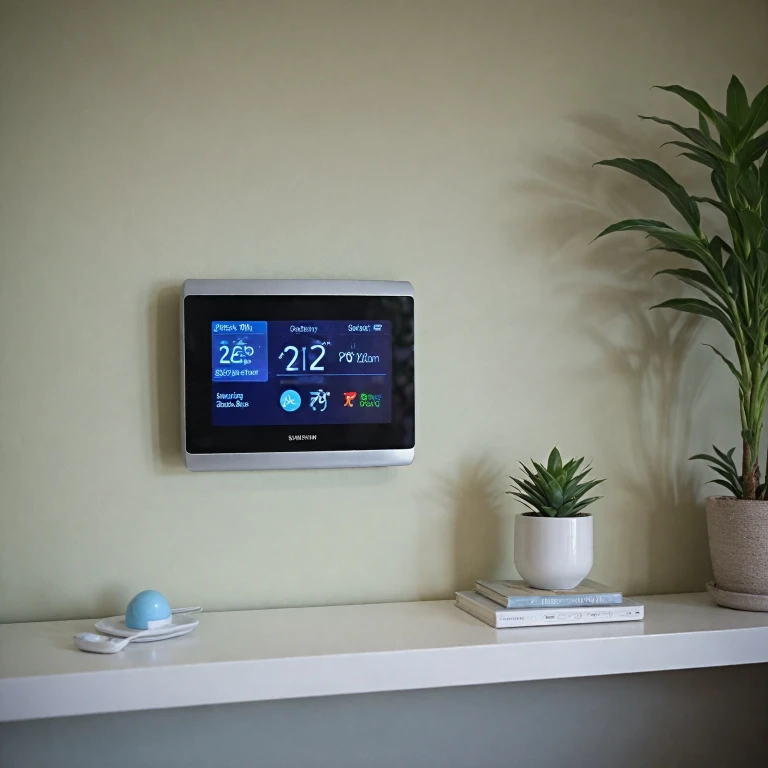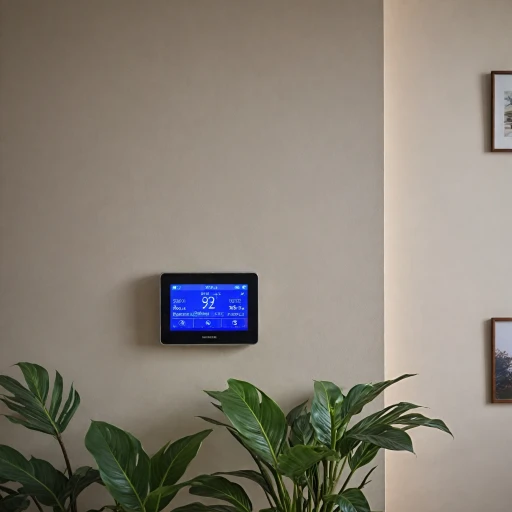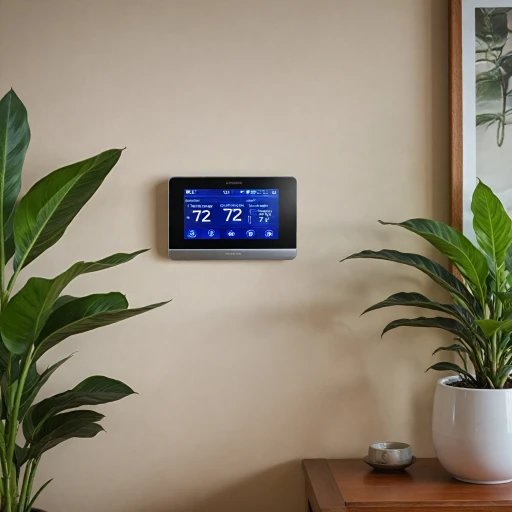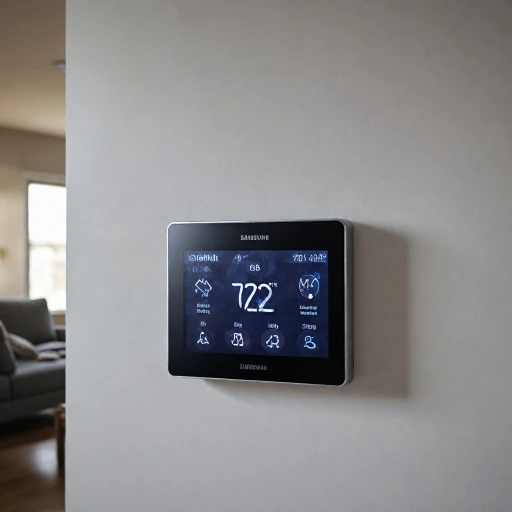The Role of Calibration in Smart Thermostats
Importance of Accurate Temperature Measurements
Understanding the Importance of Calibration Calibration in smart thermostats, such as the Ecobee, is essential for maintaining accurate temperature control in your house. This process enables the thermostat to provide precise temperature readings, ensuring that both heating and cooling systems operate efficiently. An uncalibrated thermostat could lead to incorrect temperature assessments, resulting in discomfort and potentially higher energy bills. Calibration is particularly vital when there are discrepancies between the displayed temperature and the actual temperature within your living space. These inconsistencies could arise from various factors, which we will explore further in this article. Key Components Influencing Calibration Several elements could influence the calibration process in an Ecobee thermostat, such as faulty sensors, incorrect wiring, or even a recent power outage. Each of these components plays a significant role in ensuring the system can accurately measure heat and cool settings. Additionally, regular firmware updates can impact calibration, as manufacturers continuously work to enhance performance and address potential bugs within the existing system. It's crucial to check the settings and ensure both the system and sensors are correctly configured. Calibration isn't just a one-time task; it requires continuous monitoring and adjustments. Ensuring your thermostat's calibration remains effective will contribute positively to your energy efficiency and overall comfort. To address common calibration issues or find further support, users may consider contacting Ecobee support or reviewing solutions in response to specific temperature discrepancies. Repairing or resetting the device after verifying the system's wiring and sensor functionality might be necessary steps, preventing calibration from being disabled inadvertently.Common Reasons for Calibration Issues
Potential Causes for Calibration Problems
Several factors can lead to calibration issues with your ecobee thermostat, disabling the ability to effectively maintain desired temperature levels in your house. Understanding these reasons can help in addressing and resolving them efficiently.
- Power Outages: An unexpected power outage can disrupt the setup and operations of your smart thermostat. Resetting and recalibrating the device is often required to restore accurate temperature readings.
- Wiring Issues: Incorrect or loose wiring impacts the sensor’s performance, leading to imprecise temperature readings and calibration faults. Checking the wiring connections in your HVAC system can help regain proper functionality.
- Firmware Updates: While updates aim to improve the system, they can occasionally interfere with settings, rendering calibration features disabled. It's crucial to stay informed of the latest updates and understand their effects.
- Sensor Displacement: If the temperature sensor is displaced or obstructed, it may result in calibration errors. Regularly checking sensor placements ensures your thermostat can correctly gauge the temperature.
- Manual Settings Adjustments: Incorrect manual adjustments in the settings can lead to unintended calibration issues. Ensuring accurate configurations on your ecobee thermostat often solves such disruptions.
By familiarizing yourself with these common causes, you can take proactive steps to maintain an effective calibration process for your smart thermostat, ensuring optimal heating and cooling performance without the trouble of a disabled system.
Troubleshooting Disabled Calibration
Troubleshooting Common Calibration Deactivations
Experiencing a disabled calibration on your ecobee thermostat can be perplexing, not to mention impact your home's environment. Here, we aim to provide a clear path to diagnosing and remedying these issues. To begin, evaluate your thermostat's current settings and wiring configuration. Ensure the wiring is correctly set up according to the ecobee system guide, as incorrect wiring can cause the calibration process to malfunction. Next, assess if a recent power outage or an uncontrolled reset may have altered your thermostat's settings. In such cases, recheck the device's calibration and reset parameters to realign them with your desired heating and cooling benchmarks. Moreover, it's crucial to verify whether any firmware updates are pending, as outdated software might lead to calibration issues. Regular updates can resolve software-related malfunctions, enhancing the overall reliability of your smart thermostat. Another aspect to consider is the thermostat's sensor accuracy. If temperature readings have been inconsistent, recalibrating the sensor can help restore system reliability. A support member or ecobee contact might assist in fine-tuning this. Remember, a thorough system check extends beyond the thermostat itself. Evaluate your HVAC system too, ensuring it's functioning optimally. Any underlying issues with heating or cooling mechanisms can trickle down to the thermostat's performance. Lastly, consider consulting smart thermostat manuals for additional troubleshooting insights specific to calibrating disabled features. This comprehensive guidance can often act as a bridge, helping you transition from basic troubleshooting to more advanced diagnostic measures. By following these steps, users can typically identify and resolve most calibration deactivations, restoring both the functionality and efficiency of their ecobee thermostat.Impact on Energy Efficiency and Comfort
Energy Efficiency and Comfort: Finding the Balance
Achieving optimal energy efficiency and comfort in your home is a primary objective when utilizing a smart thermostat like Ecobee. The calibration of temperature readings plays a pivotal role in ensuring that your HVAC system operates efficiently. When calibration is disabled, it can lead to discrepancies in temperature settings, affecting both energy consumption and comfort levels. A well-calibrated Ecobee thermostat ensures that the system accurately registers the room's actual temperature, allowing for precise adjustments in heating and cooling settings. If you notice that the thermostat settings are not correlating with your actual house conditions, it can lead to increased energy bills. As the system works harder to reach or maintain an inaccurate temperature setpoint, energy consumption can rise without improving your home's comfort. From a comfort perspective, the implications of a disabled calibration are evident when your heating or air conditioner activates unnecessarily or responds too late. This can cause discomfort due to either prolonged exposure to cooler or warmer conditions than intended. Restoring calibration through a reset or checking for firmware updates can be effective solutions to recalibrate the system. Additionally, ensuring that sensors and thermostat are placed correctly and not obstructed is crucial to maintain reliability and accuracy. For those experiencing persistent issues, consulting Ecobee support or seeking professional assistance may be necessary. They offer tech support to troubleshoot and optimize the heating-cooling balance. Moreover, regular maintenance of wiring and sensor placements can prevent long-term calibration problems, minimizing disruptions in your temperature management system.User Experiences and Feedback
User Reactions to Calibration Features
Smart thermostat users often share their experiences on platforms and forums, voicing opinions and suggestions about the calibration process, particularly with devices like the ecobee thermostat. Feedback generally revolves around three main areas: ease of use, precision of temperature readings, and the impact on home comfort. First, many users appreciate that the ecobee system offers advanced calibration settings. However, when these capabilities are disabled, either due to a firmware glitch or user error, it can lead to frustration. Users have reported spending considerable time trying to check and reset settings to ensure their thermostat is not just another ordinary device on the wall. Ecobee members tend to value the proactive support from ecobee support and tech teams, particularly when facing calibration challenges. Being able to reply to inquiries within minutes and resolving heating and cooling issues promptly enhances customer satisfaction. Users who called in to ask for assistance with calibrating heat, or when the cool disabled function seemed stuck, often receive effective guidance, helping them get the temperature settings back on track. For those seeking community reactions, discussions in user forums often highlight the importance of accurate wiring and sensor placement to prevent calibration issues. A well-calibrated thermostat is not only crucial for comfort, ensuring that heating and cooling systems function efficiently, but it also significantly lowers energy bills. Mention of ecobee calibrating tips is frequent among users who aim for optimal temperature control in their homes, regardless of external conditions. Nonetheless, some are concerned about the reliability of temperature readings post-calibration. Questions often crop up regarding the accuracy of these readings, especially after a power outage or a failed factory reset. Ecobee users generally admire the device's adaptability and the frequent firmware updates that address such issues, though some continue to call for more long-term solutions. As users anticipate future enhancements, they also express a desire for additional features that could further simplify the process or improve reliability. Overall, the user sentiment is largely positive, with many acknowledging that, despite some challenges, ecobee thermostats remain a leading choice in smart home climate control.Future Developments in Smart Thermostat Technology
Looking Ahead: Innovations and Future Trends in Smart Thermostat Technology
The trajectory of smart thermostat technology is one of rapid advancement, driven largely by the need for more efficient, convenient, and environmentally friendly solutions for home climate control. Recent technological innovations have shown significant promise in addressing some of the calibration and connectivity issues that users experience with devices like the Ecobee thermostat. Here's a look at what's on the horizon for smart thermostats:- Enhanced AI and Machine Learning: As AI and machine learning algorithms advance, thermostats are becoming smarter in predicting heating and cooling needs based on behavioral patterns and external conditions. Future models are expected to self-adjust in response to user preferences and environmental changes, minimizing manual calibration.
- Improved Sensor Integration: The precision of temperature readings and the overall calibration process will likely benefit from advances in multi-sensor technology. Enhanced sensor accuracy can prevent issues related to calibrating heat and cool, ultimately providing more reliable system readings.
- Smart Home Ecosystem Integration: The integration of smart thermostats with other smart home devices continues to evolve. Through ecosystems like Amazon Alexa or Google Home, users can expect more seamless control over HVAC systems, potentially reducing the frequency of having to reset settings manually or contact Ecobee support.
- Energy Efficiency Enhancements: Eco-friendly technology is a priority, with new thermostat designs focusing on further reducing energy consumption. Expect advanced algorithms that optimize heating cooling cycles, contributing to lower utility bills and reduced carbon footprints.
- User-Centric Features and Feedback Loops: Future innovations will aim to enhance user interfaces and feedback systems, offering homeowners clearer insights into their energy use and system health. This will help users pinpoint issues like when cooling calibration is disabled and how to correct it.
- Firmware and Maintenance Improvements: Expect ongoing improvements to be delivered through firmware updates. These updates will enhance device stability and performance, addressing bugs and improving the thermostat system's response to power outages or connectivity disruptions.



